- Selecting the Right Watermelon Variety
- Providing Optimal Growing Conditions
- Preparing the Soil for Planting
- Planting Watermelon Seeds or Seedlings
- Planting Watermelon Seeds
- Planting Watermelon Seedlings
- Watering and Fertilizing the Watermelon Plants
- 1. Watering:
- 2. Mulching:
- 3. Fertilizing:
- 4. Compost:
- 5. Soil Testing:
- 6. Monitoring:
- Managing Pests and Diseases
- 1. Regularly Monitor your plants
- 2. Companion Planting
- 3. Mulching
- 4. Biological Pest Control
- 5. Rotate Crops
- 6. Disease-resistant Varieties
- Pruning and Training the Watermelon Vines
- 1. Prune the Suckers
- 2. Train the Vine
- 3. Limit the Number of Fruits
- 4. Control the Lateral Growth
- 5. Remove Dead Leaves and Vines
- 6. Provide Proper Support
- Harvesting and Storing Your Juicy Watermelons
- 1. Timing is Key
- 2. Handle with Care
- 3. Cut, Don’t Pull
- 4. Wash and Dry
- 5. Proper Storage Conditions
- 6. Check for Ripeness
- “Question-Answer”
- What are the best tips for growing large watermelons?
- How important is choosing the right variety for growing large watermelons?
- Why is providing enough space for the watermelon vines important?
- What type of soil is best for growing large watermelons?
- How often should watermelons be watered?
- Are fertilizers necessary for growing large watermelons?
- How can watermelons be protected from pests and diseases?
- “Video” A Guide to Growing Melons and Watermelons: Proven Techniques by Charles Dowding
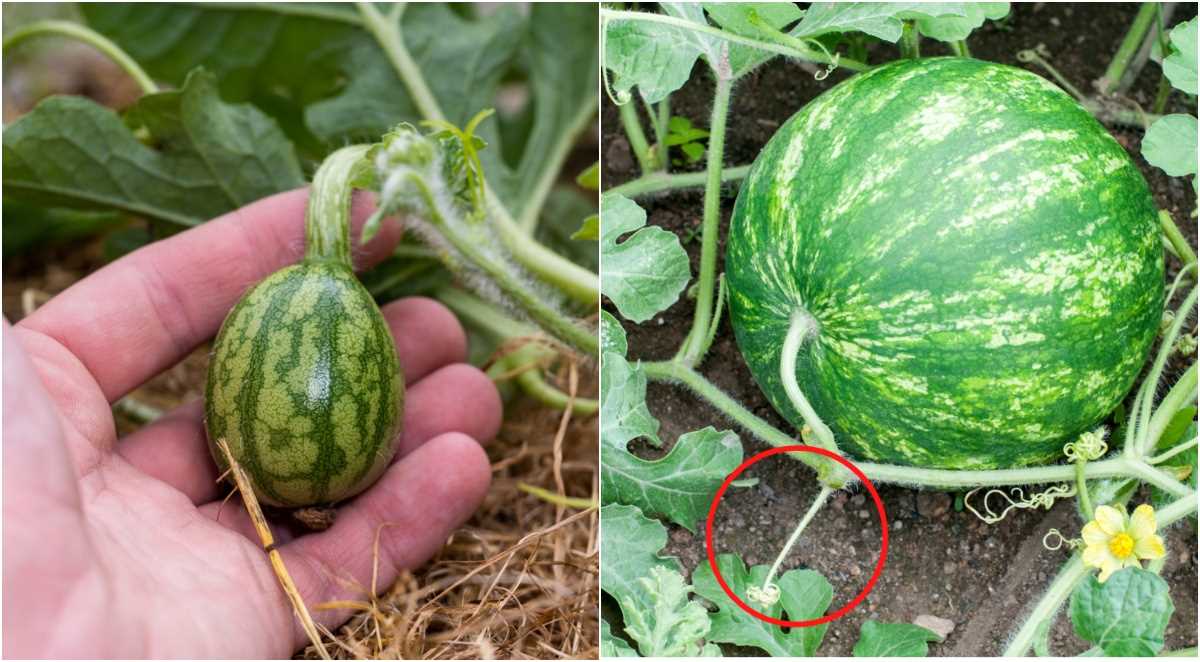
Growing watermelons is a rewarding experience that brings joy to any gardener. Nothing beats the satisfaction of biting into a juicy, sweet watermelon right from your own garden. However, growing large watermelons can be a challenge. Fortunately, there are time-tested tips that can help you unlock the secrets to growing juicy berries.
1. Start with the right variety: Choosing the right watermelon variety is crucial to growing large fruits. Look for varieties that are known for their size and flavor, such as ‘Sugar Baby’ or ‘Crimson Sweet’. These varieties are bred to produce large, sweet watermelons.
2. Provide proper spacing: Watermelon plants need plenty of space to spread their vines and grow. Make sure to give each plant at least three to four feet of space. This will allow the vines to spread out and the fruits to grow without crowding each other.
3. Give them plenty of sunlight: Watermelons thrive in full sunlight, so make sure to plant them in an area that receives at least six to eight hours of direct sunlight each day. This will ensure that the plants get the energy they need to produce large and sweet fruits.
4. Provide adequate water: Watermelons have high water needs, especially during the hot summer months. Make sure to water them regularly, keeping the soil moist but not waterlogged. Consistent watering will help the fruits grow and prevent them from becoming dry or tasteless.
5. Use organic fertilizer: To enhance the growth of your watermelons, use organic fertilizers that are rich in nitrogen and potassium. These nutrients will promote healthy foliage and fruit development. Apply the fertilizer according to the package instructions, being careful not to over-fertilize.
6. Support the fruits: As the watermelon fruits grow, they can become heavy and may need support to prevent them from breaking off the vine. Use slings made from pantyhose or old t-shirts to support the fruits. This will ensure that they continue to grow and ripen without any damage.
By following these time-tested tips, you can unlock the secrets to growing large, juicy watermelons. Imagine the satisfaction of sharing these delicious fruits with family and friends, knowing that you’ve grown them yourself. So, get your gardening gloves on and start growing those watermelons!
Selecting the Right Watermelon Variety
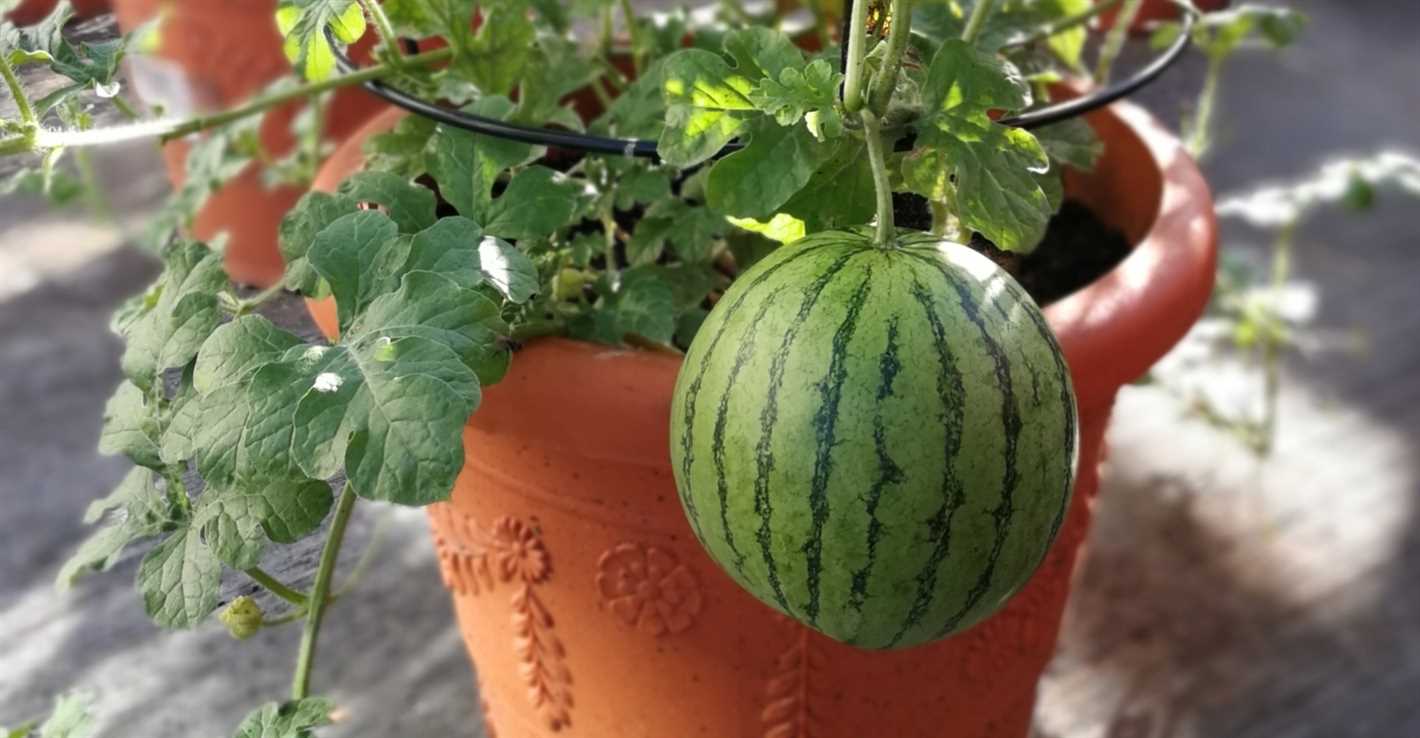
Choosing the right watermelon variety is essential when it comes to growing large and juicy fruits. Different watermelon varieties have distinct characteristics that can impact the size, taste, and overall quality of the watermelons. Here are some helpful tips to consider when selecting the right watermelon variety for your garden:
- Know your climate: Watermelon varieties have different heat and cold tolerance levels. Considering your local climate is important in determining the right variety that can thrive in your area. Some varieties are more suitable for cooler climates, while others are more resistant to hot temperatures.
- Determine your space: The size of your garden or growing space will also influence your choice of watermelon variety. Some varieties produce vines that can spread extensively, requiring ample space to grow. Others are more compact and can thrive in smaller gardens or containers.
- Decide on seedless or seeded: Watermelon varieties come in both seedless and seeded options. Seedless varieties are ideal for those who prefer not to deal with seeds while enjoying their watermelon. However, seeded varieties are often known for their exceptional flavor.
- Consider maturity period: Different watermelon varieties have varying maturity periods. Some varieties mature faster, allowing you to harvest your watermelons sooner. Others take longer to mature but may produce larger fruits.
- Research flavor profiles: Watermelon varieties range in flavor profiles, from sweet and juicy to mild and crisp. Take the time to research and read reviews of different varieties to find the flavor profile that suits your preference.
By considering these factors and doing thorough research, you can select the right watermelon variety that best fits your gardening goals and climate conditions. Remember to provide the necessary care and attention to ensure your watermelon plants thrive and produce large, juicy fruits.
Providing Optimal Growing Conditions
To grow large watermelons, it’s crucial to create optimal growing conditions. Here are some tips to help you provide the best environment for your watermelon plants:
- Choose the right location: Watermelons need full sun to thrive, so choose a sunny spot in your garden that receives at least 6-8 hours of direct sunlight daily.
- Prepare the soil: Watermelons prefer well-draining soil with a pH level between 6 and 7. Amend the soil with organic matter, such as compost, to improve its fertility and drainage.
- Plant at the right time: Watermelons are warm-season crops, so wait until the threat of frost has passed before planting. The soil temperature should be at least 70°F (21°C) for optimal germination and growth.
- Provide adequate space: Watermelon plants need plenty of space to spread out their vines and roots. Leave at least 3-4 feet between each plant and allow 8-10 feet between rows.
- Water deeply and regularly: Watermelons have high water requirements, especially during hot and dry periods. Water deeply, providing about 1-2 inches of water per week and ensuring the soil is consistently moist but not waterlogged.
- Fertilize appropriately: Watermelons are heavy feeders and require regular fertilization. Apply a balanced fertilizer high in nitrogen and potassium, following the package instructions. Be cautious not to over-fertilize, as this can lead to excessive foliage growth and smaller fruits.
- Control weeds and pests: Keep the area around your watermelon plants free from weeds, as they compete for nutrients and water. Use organic mulch to suppress weeds and conserve moisture. Keep an eye out for common pests, such as aphids, cucumber beetles, and squash bugs, and take appropriate measures to control them.
- Support the growing fruits: As the watermelons grow larger, they may need support to prevent them from touching the ground. Use slings made of fabric or netting to cradle the fruits and reduce the risk of rotting.
By providing these optimal growing conditions, you’ll give your watermelons the best chance to thrive and produce large, juicy berries for you to enjoy!
Preparing the Soil for Planting
Growing large watermelons starts with preparing the soil properly. Follow these steps to ensure your soil is ready for planting:
- Choose a sunny location: Watermelons thrive in full sun, so select a spot in your garden that receives at least 6 hours of direct sunlight each day.
- Clear the area: Remove any weeds, grass, or debris from the planting area. This will create space for your watermelon plants to grow without competition.
- Test the soil: Use a soil testing kit to check the pH level of your soil. Watermelons prefer a slightly acidic soil with a pH between 6 and 6.8. Adjust the pH level if necessary by adding soil amendments such as lime or sulfur.
- Improve drainage: Watermelons require well-draining soil. If your soil tends to be heavy or clay-like, add organic matter such as compost or well-rotted manure to improve drainage. This will prevent water from pooling around the roots and causing rot.
- Loosen the soil: Use a garden fork or tiller to loosen the soil to a depth of about 12 inches. This will help the watermelon roots penetrate the soil easily and access nutrients.
- Apply fertilizer: Watermelons are heavy feeders and benefit from a balanced fertilizer. Before planting, apply a slow-release organic fertilizer according to the package instructions. Work the fertilizer into the top few inches of soil.
By following these steps and adequately preparing your soil, you can create the ideal environment for your watermelon plants to thrive. Be sure to water regularly, provide adequate support for the growing vines, and protect your plants from pests and diseases to maximize your chances of growing large, juicy watermelons.
Planting Watermelon Seeds or Seedlings
When it comes to planting watermelon, there are two main options: planting seeds or starting with seedlings. Both methods have their advantages and can lead to successful growth if done properly.
Planting Watermelon Seeds
Planting watermelon seeds is a popular choice for many gardeners. It allows you to have more control over the growing process and gives you a wider variety of watermelon options to choose from. Here are some tips for planting watermelon seeds:
- Choose the right variety: Look for watermelon seeds that are suited for your climate and growing conditions. Some varieties are more tolerant of heat or have shorter growing seasons, so make sure to choose accordingly.
- Prepare the soil: Watermelons thrive in well-drained soil that is rich in organic matter. Prepare the soil by removing any weeds or debris and adding compost or aged manure.
- Sow the seeds: Create mounds or raised beds to plant the watermelon seeds. Sow the seeds about 1 inch deep and space them according to the seed packet instructions, usually about 2-3 feet apart.
- Provide proper care: Water regularly, but avoid overwatering. Keep the soil moist but not saturated. As the seedlings grow, thin them out to ensure proper spacing and remove any weeds that may compete for nutrients.
- Protect the seedlings: Watermelon seedlings are vulnerable to pests and diseases. Use natural pest control methods or organic pesticides to protect them from common garden threats.
- Harvesting: Once the watermelons are fully matured, usually indicated by a dull-looking rind and a hollow sound when tapped, it’s time to harvest. Cut the watermelon off the vine, leaving a few inches of stem attached.
Planting Watermelon Seedlings
If you prefer a head start in the growing process, you can opt for planting watermelon seedlings. Here’s how:
- Purchase healthy seedlings: Look for seedlings that are healthy and disease-free. Choose varieties that are suitable for your growing conditions.
- Prepare the planting hole: Dig a hole that is large enough to accommodate the root ball of the seedling. Add compost or aged manure to the soil for added nutrition.
- Planting the seedlings: Gently remove the seedling from its container and place it in the planting hole. Make sure the soil is at the same level as the top of the root ball.
- Provide proper care: Water regularly and keep the soil moist but not waterlogged. Mulch around the seedlings to conserve moisture and prevent weed growth.
- Protect the seedlings: Just like with planting seeds, protect the seedlings from pests and diseases using natural or organic methods.
- Harvesting: Once the watermelons are matured, harvest them as described above, cutting them off the vine with a few inches of stem attached.
Whether you choose to plant watermelon seeds or seedlings, remember to provide them with proper care, water, and nutrients throughout the growing season. By following these guidelines, you’ll be on your way to growing large and juicy watermelons!
Watering and Fertilizing the Watermelon Plants
Watering and fertilizing your watermelon plants properly is essential to their growth and development. Here are some tips to ensure your watermelons receive the right amount of water and nutrients:
1. Watering:
Watermelon plants have deep root systems, so it’s important to water them deeply and infrequently. Aim to provide about 1-2 inches of water per week, either through rainfall or irrigation.
It’s best to water in the morning to allow the leaves and soil to dry before nightfall, reducing the risk of fungal diseases. Avoid overhead watering, as it can promote the spread of diseases and waste water.
2. Mulching:
Apply a layer of organic mulch, such as straw or grass clippings, around your watermelon plants. Mulching helps to retain soil moisture, suppress weed growth, and regulate soil temperature.
Make sure to keep the mulch a few inches away from the base of the plants to prevent rotting and pest problems.
3. Fertilizing:
Watermelon plants require a balanced fertilizer that provides essential nutrients like nitrogen, phosphorus, and potassium. Before planting, incorporate a slow-release fertilizer into the soil according to the package instructions.
As the plants grow, you can supplement with a water-soluble fertilizer every 2-3 weeks, following the manufacturer’s recommendations for proper dilution and application rates.
4. Compost:
Adding compost to the soil before planting can improve its fertility and structure. Compost enriches the soil with organic matter, which helps retain moisture and provides a slow-release source of nutrients.
Spread a layer of compost around the base of the watermelon plants, being careful not to disturb the roots.
5. Soil Testing:
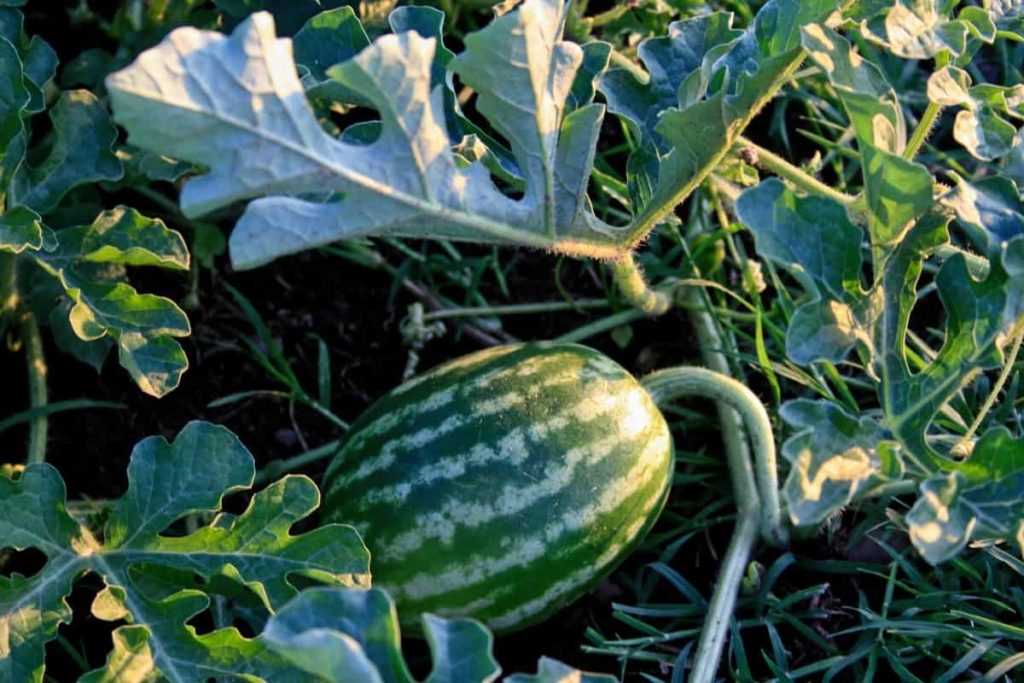
Regularly test the soil pH and nutrient levels to ensure the plants are receiving the proper balance of nutrients. Adjust the pH if necessary using amendments like lime or sulfur.
Avoid over-fertilizing, as this can lead to excessive foliage growth and fewer fruits.
6. Monitoring:
Pay attention to your watermelon plants’ growth and overall health. Look for signs of stress such as wilting leaves, yellowing, or stunted growth, which may indicate a water or nutrient deficiency.
Adjust your watering and fertilization practices accordingly to meet the specific needs of your plants.
By providing adequate water and nutrients, you can help your watermelon plants thrive and produce large, juicy berries for a delicious summer harvest.
Managing Pests and Diseases
Watermelons are vulnerable to a variety of pests and diseases. Protecting them from these threats is crucial to ensure a bountiful harvest. Here are some effective ways to manage pests and diseases:
1. Regularly Monitor your plants
Keep an eye on your watermelon plants for any signs of pests or diseases. Look for chewed leaves, discolored spots, or wilting. Early detection will allow you to take immediate action and prevent further damage.
2. Companion Planting
Companion planting can deter pests that are attracted to watermelons. Planting marigolds, basil, or mint near your watermelon plants can repel pests like aphids, cucumber beetles, and squash bugs. These flowers and herbs emit scents that pests dislike.
3. Mulching
Applying mulch around the base of your watermelon plants can help control weeds and deter pests. Use organic mulch, such as straw or wood chips, to retain moisture, suppress weed growth, and create a barrier against crawling insects.
4. Biological Pest Control
Introduce beneficial insects, such as ladybugs and lacewings, to your garden. These insects feed on pests and can help keep their populations in check. Consider using nematodes, microscopic worms that can target and kill specific pests.
5. Rotate Crops
Rotation is essential to prevent the buildup of pests and diseases in the soil. Avoid planting watermelons in the same spot year after year. Rotate your crops, and do not plant members of the cucurbit family in the same area for at least three years.
6. Disease-resistant Varieties

Choose watermelon varieties that are resistant to common diseases in your area. While no variety is completely immune, disease-resistant varieties have a better chance of fighting off infections. Check with local nurseries or gardening centers for recommended disease-resistant watermelon varieties.
By implementing these management strategies, you can protect your watermelon plants from pests and diseases, ensuring a healthy and abundant harvest of juicy berries!
Pruning and Training the Watermelon Vines
Pruning and training the watermelon vines is an essential step in growing large watermelons. By removing excess foliage and guiding the vine’s growth, you can direct the plant’s energy towards producing bigger and juicier berries.
1. Prune the Suckers
Watermelon plants often produce side shoots, known as suckers, that compete for the plant’s resources. It is important to remove these suckers to allow the main vine to concentrate its energy on fruit production. Use clean pruning shears to carefully cut off the suckers that emerge from the base of the plant.
2. Train the Vine
To prevent the watermelon vine from sprawling all over the garden, it is necessary to train it to grow in a specific direction. You can use stakes or trellises to guide the vines upwards, allowing for better air circulation and sunlight exposure. Gently tie the vines to the support structure using soft plant ties or twine, being careful not to constrict the growing stems.
3. Limit the Number of Fruits
While it is tempting to let all the watermelon fruits grow on the plant, this can lead to smaller and less flavorful berries. To ensure the fruits reach their maximum size, it is important to thin them out. Leave only a few healthy-looking watermelons per vine, removing the rest when they are still small and underdeveloped.
4. Control the Lateral Growth
Watermelon vines tend to branch out laterally, producing more foliage instead of directing energy towards fruit production. It is crucial to control this lateral growth by gently redirecting the vines back to the main stem. Regularly check for any branches that are growing sideways or downwards and gently guide them upwards or towards the chosen direction.
5. Remove Dead Leaves and Vines
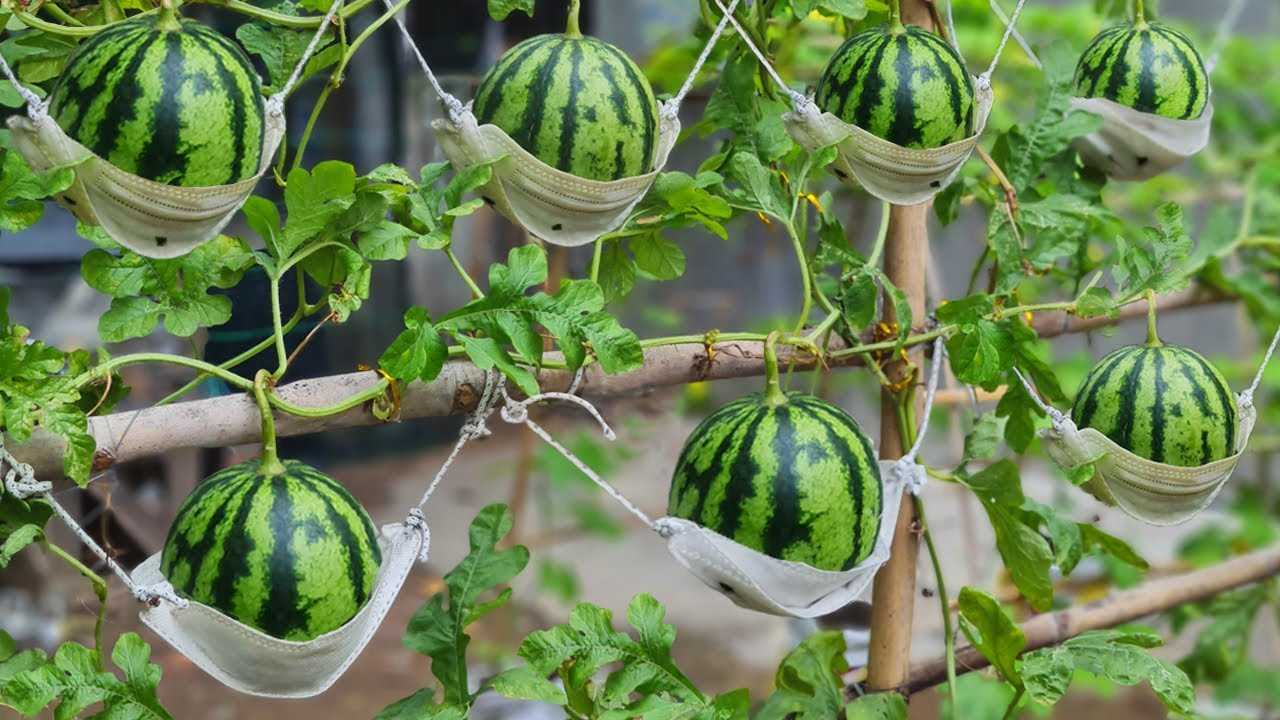
As the watermelon plants grow, some leaves and vines may become yellow or wilted. These dead parts can hinder the overall health of the plant and restrict the sun and air from reaching the fruits. Regularly inspect the plant for any dead leaves or vines and carefully remove them to promote better growth and fruit development.
6. Provide Proper Support
As the watermelon fruits grow larger, they can become heavy and put stress on the vines. To avoid damage to the plant and fruits, provide proper support for the developing watermelons. Secure the fruits using slings made from fabric or pantyhose and attach them to the trellis or stakes. This will prevent the weight of the watermelons from pulling down the vine and ensure the fruits continue to grow in size.
By following these pruning and training techniques, you can optimize the growth of your watermelon vines and ultimately produce large and juicy berries. Remember to always handle the vines and fruits with care to avoid damaging them during the pruning and training process.
Harvesting and Storing Your Juicy Watermelons
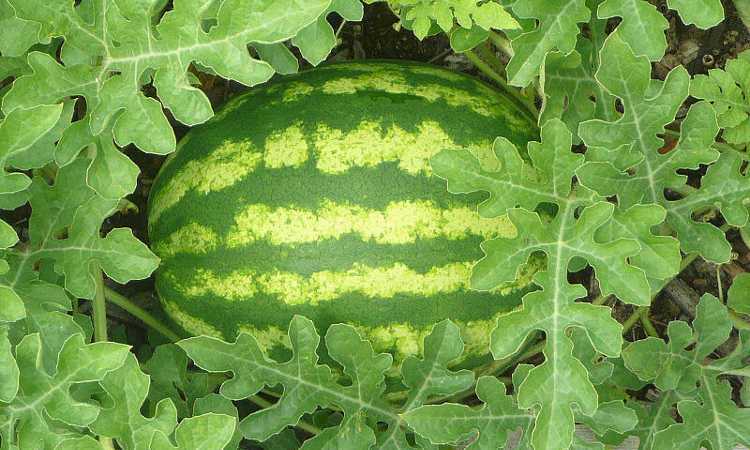
After patiently tending to your watermelon plant, it’s finally time to harvest the juicy fruits of your labor. Proper harvesting and storage techniques will ensure that you can enjoy your homegrown watermelons for weeks to come. Here are some tips to help you maximize the flavor and shelf life of your freshly picked watermelons:
1. Timing is Key
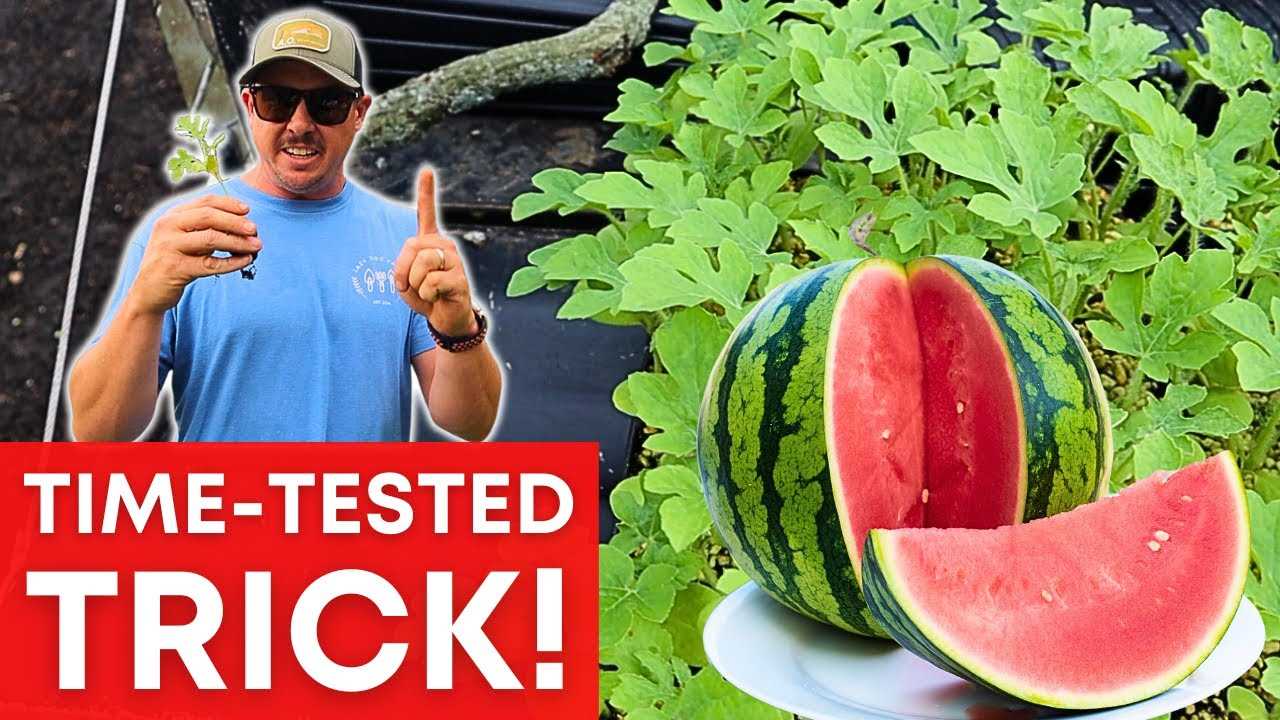
Knowing when to harvest your watermelons is crucial for optimal taste and texture. Look for signs that the watermelons are ripe, such as a pale or yellowish spot on the underside of the fruit. This spot indicates that the watermelon is fully matured and ready to be harvested. Additionally, the tendrils near the stem of the fruit should be dried up and turning brown.
2. Handle with Care
While watermelons may seem sturdy, they can easily be damaged if mishandled during the harvesting process. Always support the fruit’s weight with your hand or a soft cloth as you lift it off the vine. Avoid dropping or tossing the watermelon, as this can cause internal bruising and affect its quality.
3. Cut, Don’t Pull
When harvesting your watermelons, use a clean and sharp knife to cut the fruit from the vine. Pulling or twisting the watermelon off the vine can damage both the fruit and the plant. Make a clean cut at the stem, leaving a short piece of the stem attached to the fruit.
4. Wash and Dry
Once your watermelons are harvested, it’s essential to wash them to remove any dirt or debris. Use clean water and a soft brush to gently scrub the surface of the watermelon. After washing, pat the watermelon dry with a clean towel to remove excess moisture.
5. Proper Storage Conditions
Store your harvested watermelons in a cool and dry place, such as a cool room or a cellar. Avoid placing them in direct sunlight or near heat sources, as this can cause the fruits to spoil quickly. Ideally, the temperature should be around 50-55 degrees Fahrenheit (10-13 degrees Celsius) with a humidity level of 70-80%.
6. Check for Ripeness
Before consuming your harvested watermelons, it’s important to check for ripeness and freshness. Inspect the skin for any signs of mold or decay. Give the watermelon a gentle tap – if it sounds hollow, it’s a good indication that the fruit is ripe. Lastly, check the flesh for a vibrant color and sweet aroma. If everything looks and smells good, your watermelon is ready to enjoy!
By following these simple tips for harvesting and storing your watermelons, you can savor the sweet and refreshing taste of your homegrown fruits for an extended period of time. So go ahead and enjoy the fruits of your labor!
“Question-Answer”
What are the best tips for growing large watermelons?
Here are six time-tested tips for growing large watermelons. First, choose the right variety that is known for producing large fruits. Second, provide plenty of space for the vines to spread out and grow. Third, ensure that the soil is well-draining and rich in organic matter. Fourth, water the plants deeply and regularly, especially during dry spells. Fifth, use fertilizers to provide essential nutrients to the plants. And finally, protect the fruits from pests, diseases, and extreme weather conditions.
How important is choosing the right variety for growing large watermelons?
Choosing the right variety is crucial for growing large watermelons. Some varieties are known for producing large fruits, while others may only yield small or medium-sized watermelons. Therefore, it is important to research and select a variety that is specifically bred for its ability to grow large and juicy berries.
Why is providing enough space for the watermelon vines important?
Providing enough space for the watermelon vines to spread out is important because it allows the plants to grow and develop properly. The vines need ample space to stretch out and access sunlight, air, and nutrients from the soil. If the vines are overcrowded, they may compete for resources and result in smaller fruits or stunted growth.
What type of soil is best for growing large watermelons?
The best type of soil for growing large watermelons is well-draining soil that is rich in organic matter. Watermelons prefer loose and loamy soil that allows for good drainage, as excessive moisture can lead to root rot and other fungal diseases. Additionally, adding compost or organic matter to the soil can improve its fertility and provide essential nutrients for the plants.
How often should watermelons be watered?
Watermelons should be watered deeply and regularly, especially during dry spells. Typically, watermelons require about 1-2 inches of water per week, either from rain or irrigation. However, the frequency and amount of water may vary depending on the weather conditions and the specific needs of the plants. It is important to ensure that the soil is evenly moist but not waterlogged.
Are fertilizers necessary for growing large watermelons?
Fertilizers are essential for growing large watermelons because they provide the necessary nutrients for healthy plant growth. Watermelons are heavy feeders and require a balanced supply of nutrients, including nitrogen, phosphorus, and potassium. Fertilizers can be applied at the time of planting and throughout the growing season to ensure that the plants have an adequate supply of nutrients.
How can watermelons be protected from pests and diseases?
Watermelons can be protected from pests and diseases by implementing various strategies. These can include using physical barriers such as row covers or netting to prevent pests from accessing the plants. Applying organic insecticides or pesticides can also help control common pests. Additionally, practicing good sanitation, such as removing fallen fruits or weeds, can reduce the risk of diseases. Regular monitoring of the plants for any signs of infestation or disease is also important for early intervention.







